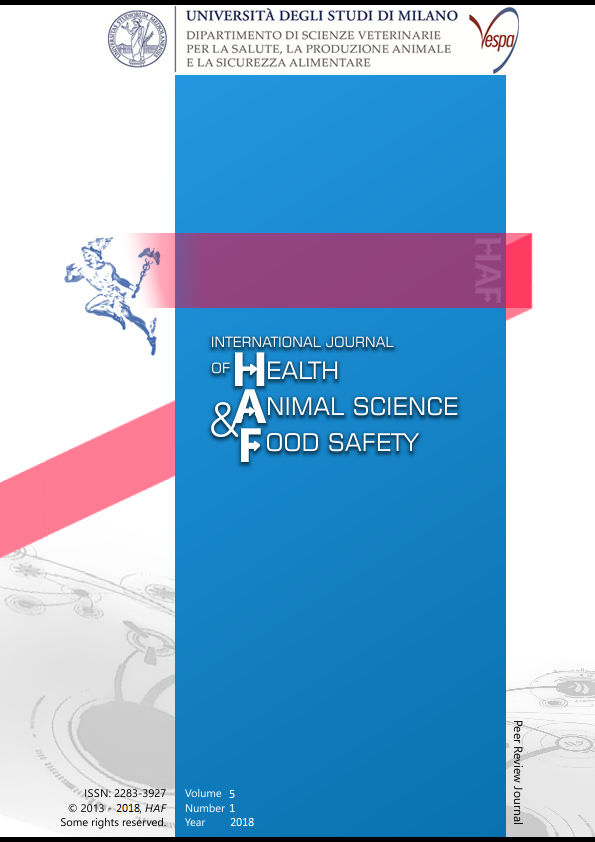Abstract
The objective of this study was to investigate the effect of feeding broiler chicken on different vegetable oils with commercial multi- enzyme feed additives on the quality characteristics of chicken burger. A total of 216 one-day-old chicks of (Hubbard) strain were randomly assigned to six dietary treatments as (2×3) factorial designs where two sources of dietary oil contained soybean oil and palm oil with three levels of commercial multi-enzyme feed additives. Treatments were: soybean oil only (T1), soybean oil+ ZAD (T2), soybean oil+ AmPhi-BACT (T3), palm oil only (T4) , palm oil + ZAD (T5) and palm oil + AmPhi- BACT (T6). Results showed that chicken burger of T1 group had the higher pH value (6.22); slight difference was found in pH value of T3 group (6.18). No significant difference was found in burger of T5 and T6 group. Burger processed from T1 group had the higher T.B.A value (0.115) followed by burger of T5 (0.076); while the lowest T.B.A value found in burger of T2 group (0.031). No significant differences were found in shrinkage measurements. Burger processed from T6 group had the higher score of sensory attributes and overall acceptability, while the differences between the other burger groups were not significant.
Riferimenti bibliografici
A.M.S.A., 1995. American Meat Science Association. Research guidelines for cookery, sensory evaluation and instrumental tenderness measurements of fresh beef. Chicago, IL, USA.
Abdulla, N.R., Loh, T.C., Akit, H., Sazili, A.Q., Foo, H.L., Mohamad, R., Abdul Rahim, R., Ebrahimi, M., Sabow, A.B., 2015. Fatty acid profile, cholesterol and oxidative status in broiler chicken breast muscle fed different dietary oil sources and calcium levels. South African Journal of Animal Science. 45 (2), 153-163.
AOCS, 1998. American Oil Chemists' Society. Official method Cd 19-90. 2-Thiobarbituric acid value. Direct method. In: Firestone D, editor. Official Methods and Recommended Practices of the American Oil Chemists' Society, 5th ed. Champaign, p.3.
Asghar, A., C. F. Lin, J. I. Gray, D. J. Buckly, A. M.Booten and C. J. Flagal, 1989. Influence of oxidized dietary oil and antioxidant supplementation on membrane bound lipid stability in broilers meat. British Poultry Science. 30, 815-823.
Berry, B.W., 1993. Fat level and freezing temperature affect sensory, shear cooking and composition properties of ground beef patties. Journal of Food Science. 58 (1), 34-42.
Engberg, R. M., C. Lauridsen, S. K. Jensen and K.Jakobson, 1996. Inclusion of oxidized vegitable oil in broiler diets. Its influence on nutrient balance and on the antioxidant status of broiler. Poultry Science. 75, 1003-1011.
Gray, J.I., Gomaa, E.A., Buckley, D.J., 1996. Oxidative quality and shelf life of meats. Meat Science. 43, S111–S123.
Hood, D. E., 1980. Factors affecting the rate of metmyoglobin accumulation in prepackaged beef. Meat Science. 4 (4), 47–50.
Lin, C. F., A. Asghar, J. I. Gray, D. J. Buckly, A. M.Boome, R. L. Crackel, C. J. Flegal, 1989.Effect of oxidized dietary oil and antioxidant supplementation on broiler growth and meat stability. British Poultry Science. 30, 855-864.
Murphy, E. W., Criner, P. E., Grey, B. C., 1975. Comparison of methods for calculating retentions of nutrients in cooked foods. Journal of Agricultural Food Chemistry. 23, 1153–1157.
Naveena, B. M., Muthukumar, M., Sen, A. R., Babji, Y., Murthy, T. R. K., 2006. Quality characteristics and storage stability of chicken patties formulated with finger millet flour (Eleusine coracana). Journal of Muscle Foods. 17 (1), 92–104.
Omojola, A. B., Otunla, T. A., Olusola, O. O., Adebiyi, O. A., Ologhobo, A. D., 2014. Performance and Carcass Characteristics of Broiler Chicken Fed Soybean and Sesame/Soybean Based Diets Supplemented With or Without Microbial Phytase. American Journal of Experimental Agriculture.4 (12), 1637-1648.
Pekel, A. Y. Demirel, G., Midilli, M., Yalcintan, H., Ekiz, B., Alp, M., 2012. Comparison of broiler meat quality when fed diets supplemented with neutralized sunflower soapstock or soybean oil. Poultry Science. 91, 2361–2369.
Rodriguéz MA, Crespo NP, Cortés M, CREUS E, Medel P. Efecto del tipo de grasa de la dieta en la alimentacion del broiler, con enfasis en los productos derivados del aceite de palma. Selecciones avícolas. 2002. 44(10), 693-702.
Rymer, C., Givens, D.I., 2005. Omega-3 fatty acid enrichment of edible tissue of poultry: A review. Lipids, 40, 121-130.
SAS. 2000. User’s Guide Statistics. SAS Institute, Inc. Cary, N.C., USA.
Stanaćev, V. Ž., Milošević, N., Pavlovski, Z., Milić, D., Vukić Vranješ, M., Puvača, N., Stanaćev, V. S., 2014. Effects of dietary soybean, flaxseed and rapeseed oil addition on broilers meat quality. Biotechnology in Animal Husbandry. 30 (4), p 677-685.
Zakaria, H. A.H. Mohammad, A. R. J., Abu Ishmais, M. A. 2010. The Influence of Supplemental Multi-enzyme Feed Additive on the Performance, Carcass Characteristics and Meat Quality Traits of Broiler Chickens International Journal of Poultry Science. 9 (2), 126-133.
This work is licensed under a CC BY-SA 4.0 international

